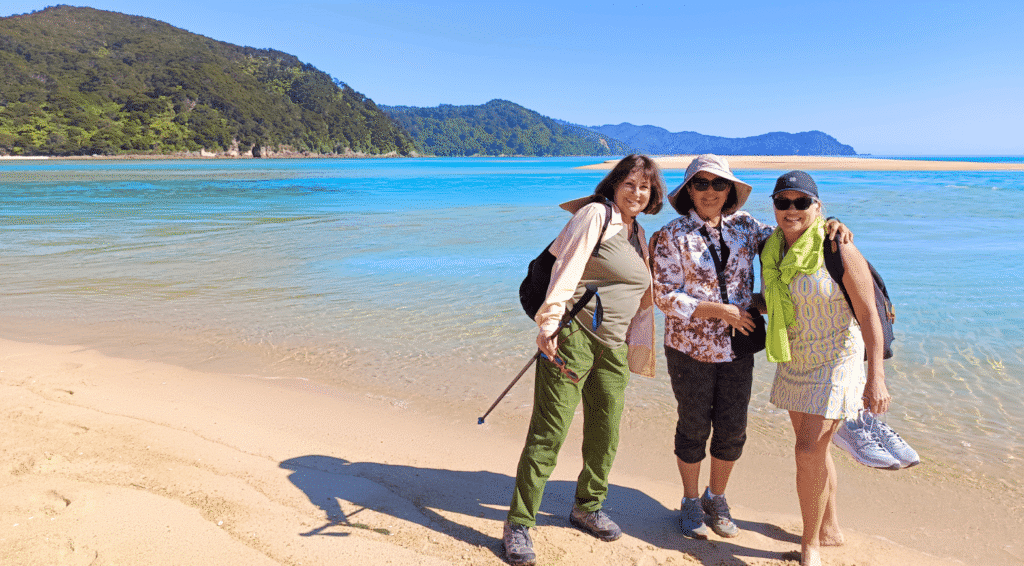No trip to Japan is complete without a relaxing dip in an onsen. What is an onsen? Onsen are natural hot springs, fueled by volcanic activity, as well as the resort atmosphere that has emerged around many such springs.
Japan offers around 2,300 onsen to choose from, many of them included in ryokan (traditional inns). We’ve compiled a list of ten of the best onsen in Japan. No matter what region you’re traveling to, you’ll be able to unwind. Reaching the onsen is simple and affordable when you use Japan Railways and the Japan Rail Pass.
Kusatsu Onsen
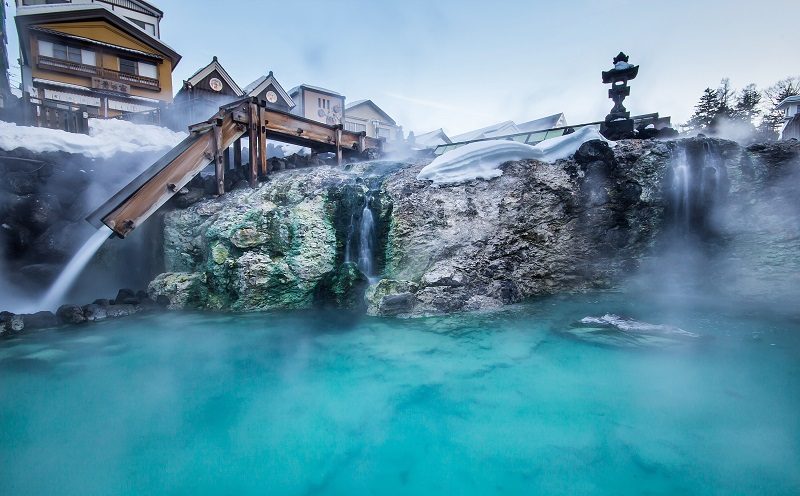
Kusatsu is considered the foremost onsen in Japan. It is supplied with large volumes of hot water, “said to cure every illness but lovesickness”. There, you can visit multiple hot springs free of admission fees. A number of resorts and inns are available, as well as shops and cafes. The area also offers skiing in the winter and hiking during warmer months.
Address: Kusatsumachi, Agatsuma District, Gunma Prefecture 377-1711.
How to get to Kusatsu Onsen: From Tokyo, use your JR Pass to take the Joetsu Shinkansen northbound to Takasaki Station. Then, change to the JR Agatsuma line to Naganohara-Kusatsuguchi Station. From the station, you may take a JR bus to the onsen.
Alternatively, the Limited Express Kusatsu connects Ueno Station (Tokyo) and Naganohara-Kusatsuguchi directly and is also covered by the Japan Rail Pass. The bus runs only twice in the weekdays and once on weekends, so please check the timetables via Hyperdia or in a JR Office.
Hakone Onsen
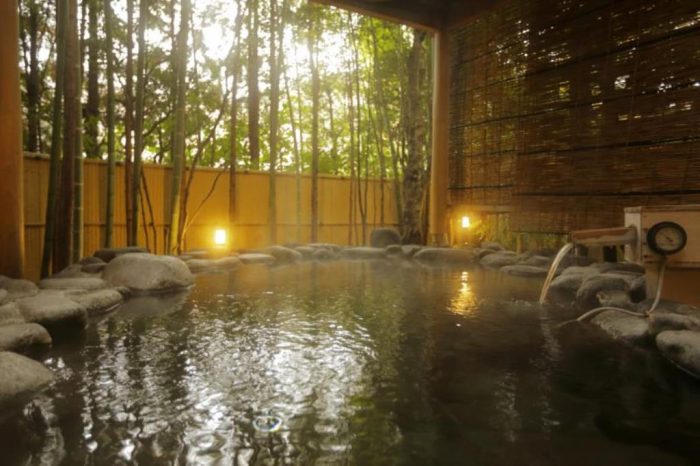
Located less than two hours from Tokyo, Hakone is a must-visit destination for anyone traveling through the neon city. During your stay, you can visit numerous souvenir shops. You can also stay in one of several ryokan or in a nearby resort hotel, as many of them include their own private onsen.
Some of the best-reviewed luxury ryokan include Gora Hanaougi, Gora Kadan, Hakone Suishoen, Hakone Kowakudani Onsen (in the picture) and Yamanochaya.
How to get to Hakone: From Tokyo, take the JR Odakyu Line to Odawara Station. The city center is a 20-minute bus ride from the station.
Beppu Onsen
Imagine a city skyline caped in steam, white wisps rising between buildings. That is Beppu city in Oita prefecture, home to eight distinct onsen, each with public baths and ryokan. In addition to traditional onsen, bathers can enjoy sand baths, in which they are covered in naturally heated sands; steam baths; and mud baths.
Tours of the “hells”, or hot springs with unique colors and features are also available. Some tours even serve eggs boiled in one of the springs!
How to get to Beppu: From Tokyo, take the Tokaido/Sanyo Shinkansen to Kokura Station. There, transfer to the Sonic Limited Express bound for Beppu Station.
Yufuin Onsen

Surrounded by the mountains of Kyushu (southern Japan), this onsen’s most prominent vista is that of the twin peaks of Mount Yufu. During your stay, you may delight in Yufuin’s many boutique stores, art museums, and cafes. Ryokan are scattered throughout the town, many of which open their onsen to walk-in guests during the day.
Address: Kawakami, Yufuincho, Yufu-shi, Oita.
How to get to Yufuin Onsen: From Beppu Station, take the JR Yufu line travel to Oita Station. There, you will transfer trains before continuing to Yufuin Station. The whole trip is covered by your JR Pass.
Kurokawa Onsen

Lush and verdant, Kurokawa is another town in Kyushu that has purposefully maintained a traditional atmosphere. Ryokan, bathhouses, and shops line the main streets. The springs in this area are said to be beneficial for nerve pain.
Address: Minami Ogunimachi, Aso-gun, Kumamoto.
How to get to Kurokawa: The nearest train station is Aso Station, which is located about one hour away from the onsen by bus. Japan Rail Pass holders can board the Fukuoka-Kurokawa highway bus from Hita Station, which is connected to Hakata Station in Fukuoka by a limited express train.
Noboribetsu Onsen

Noboribetsu is regarded as the best onsen resort on the northern island of Hokkaido. The waters in its hot spring baths contain sulfur and hydrogen sulfide, which are said to soften and lighten skin, as well as iron, which lessens fatigue. The minerals in the water paint the surrounding landscape, giving it the nickname “Hell Valley”.
How to get to Noboribetsu: From Tokyo, take the JR Tohoku/Hokkaido Shinkansen to Shin-Hakodate-Hokuto. There, transfer to the Hokuto Limited Express train to Noboribetsu Station.
Kinosaki Onsen

A river lined with willow trees, old fashioned ryokan, and nostalgic arcades defines Kinosaki, voted “best hot spring town” by Lonely Planet. A sanctuary for the endangered oriental stork is also located nearby.
Address: 357-1 Kinosakicho Yushima, Toyooka 669-6101, Hyogo Prefecture.
How to get to Kinosaki Onsen: From Kyoto Station, take the Kinosaki Limited Express train to Kinosaki Onsen Station. Travel time is roughly 2’5 hours. From Osaka Station, you can take the Konotori Limited Express train to Kinosaki Onsen Station. Travel time is 2 hours and 40 minutes.
Dogo Onsen
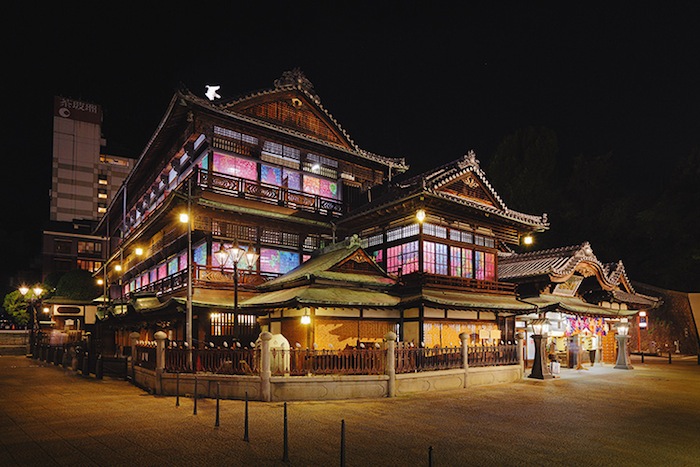
Dogo, in Shikoku island, is the oldest onsen in Japan, boasting 3,000 years of history. It features a large, castle-like bathhouse and numerous ryokan. This bathhouse, the Honkan, inspired elements of the Studio Ghibli film Spirited Away.
Address: 5-6 Dogoyunomachi, Matsuyama 790-0842, Ehime Prefecture.
How to get to Dogo Onsen: From Tokyo, take the JR Tokaido/Sanyo Shinkansen to Okayama. There, transfer to the JR Shiokaze limited express to Matsuyama. The Dogo Onsen Honkan is a four-minute walk from the station.
Fuji Kawaguchiko Onsen

Lake Kawaguchiko is located at the base of the iconic Mount Fuji. A number of bath houses and ryokan offer indoor and outdoor bathing, but the view of Mount Fuji from the baths may be obscured by structures or clouds. The area is most scenic during the spring cherry blossom season and autumn koyo, or leaf viewing, season.
Address: Fuji Five Lakes, Yamanashi, Chubu.
How to get to Fuji Kawaguchiko: From Shinjuku Station (Tokyo) the JR Chuo Line to Otsuki Station. From Otsuki, take the Fujikyu Railway to Kawaguchiko Station. The area can also be reached from Tokyo by bus.
Ibusuki Onsen
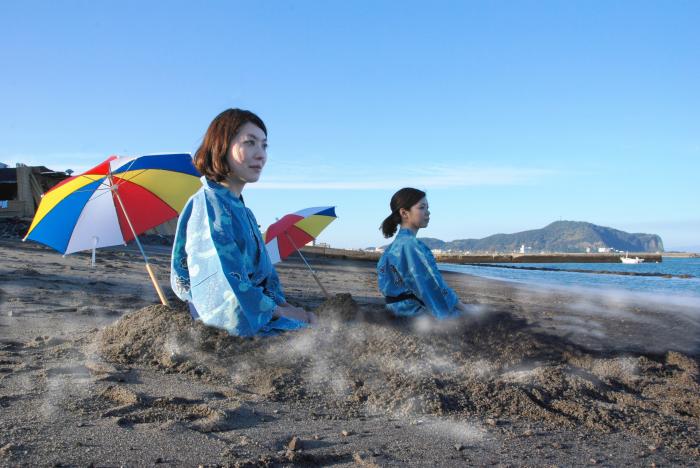
Located in the southern extreme of Kyushu, Ibusuki is famous for its sand baths, called Sunamushi. The most popular location for being buried in naturally steam-heated sand is the outdoor Saraku Sand Bath Hall, but the experience is also available at a number of ryokan.
Address: Ibusuki-shi, Kagoshima Prefecture.
How to get to Ibusuki: Ibusuki Station is connected from Kagoshima-Chuo Station by a limited express train. Travel time is 50 minutes. From Ibusuki Station you can take a direct bus to the onsen.
